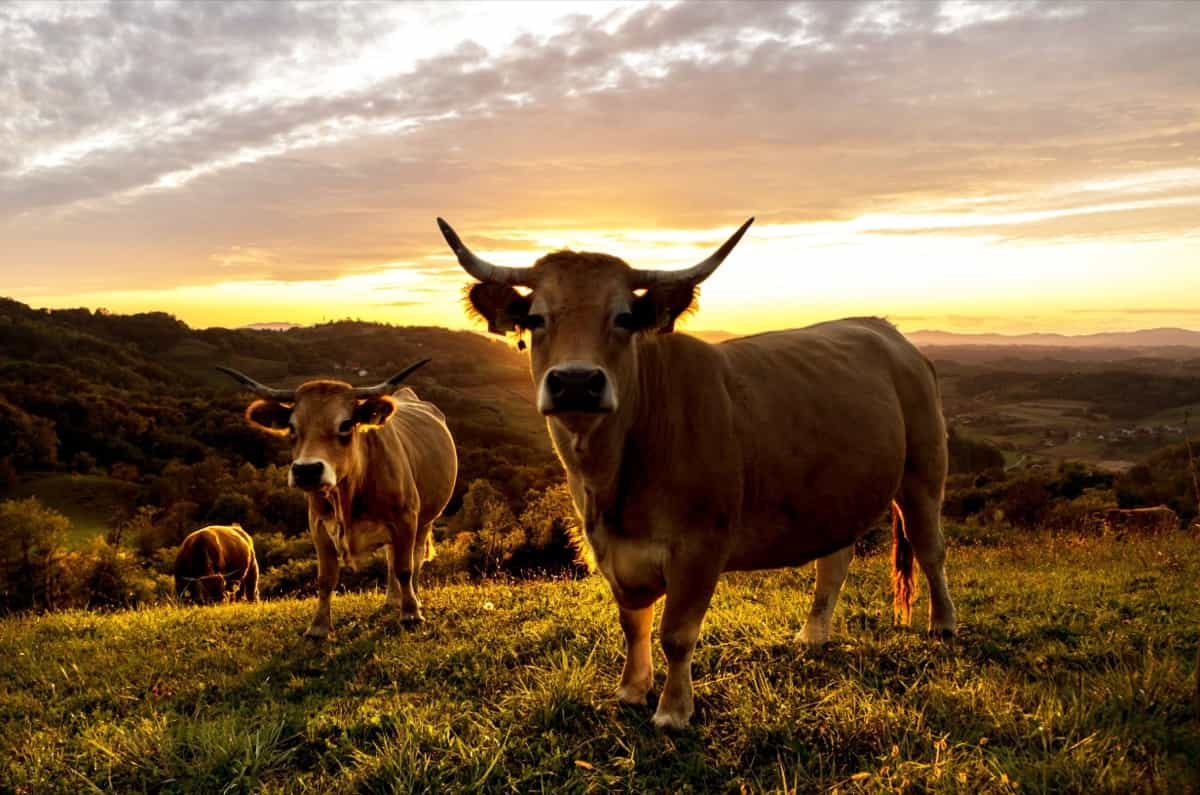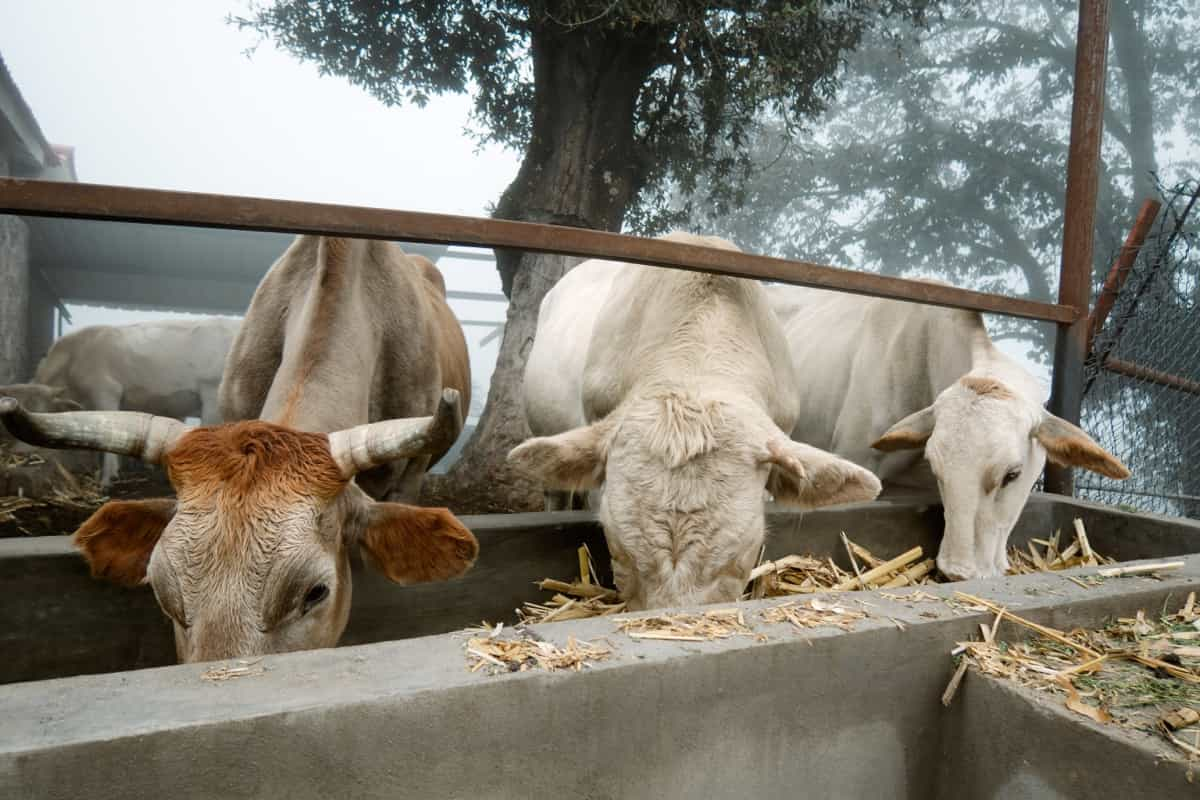Small-scale farming is particularly suitable for zebu cattle, especially in tropical climates with high humidity and temperatures. If they are around humans often enough, they become quite docile, hardy, and resistant to disease and parasites. Zebu cattle are considered to be the oldest domestic breed in the world. The cows are found in India, Africa, Brazil, and the US. They are bred primarily for meat production but can also be used for milk production and draught.

Origin of Zebu Cow Breed
The Zebu cow breed, also known as Bos indicus, has its origins in the Indian subcontinent. This breed is known for its distinctive hump on the back, large ears, and loose skin. Zebu cows have been domesticated for thousands of years and were highly valued for their ability to adapt to hot and arid environments. They played a vital role in the agricultural practices of ancient civilizations, providing milk, meat, and labor. As a result of trade and colonization, the Zebu breed spread worldwide, becoming an important livestock breed for many countries. Today, Zebu cows are found in various regions, contributing to the global diversity of cattle breeds.
Characteristics of Zebu Cows
- They have a high heat tolerance and are well-adapted to hot and humid climates.
- Zebu cows are strongly resistant to diseases and parasites, making them suitable for tropical regions.
- They are also renowned for their ability to survive on poor-quality forages and have a slow metabolic rate.
- Zebu cows have a docile temperament, making them easier to handle and manage.
- They are efficient converters of grass and forage into milk and meat.
- Zebu cows have long, upward-curving horns used for defense and cooling.
- They exhibit excellent maternal instincts and are known for their good mothering abilities.
- Zebu cows have a lower metabolic rate, allowing them to maintain weight and produce milk with less feed consumption.
- The breed is popular for its excellent adaptability and resilience in harsh environmental conditions.
Price Range of Zebu Cows
The price range of Zebu cows in India varies depending on various factors such as age, breed, and quality. On average, the price of a Zebu cow ranges from INR 30,000 to INR 1,50,000. However, premium breeds or high-quality cows can cost up to INR 3,00,000 or more. It is advisable to consult local livestock markets or breeders for accurate and up-to-date prices.
Life Span of Zebu Cows
The life span of Zebu cows, also known as Brahman cows, ranges between 18 to 22 years. These cattle are known for their adaptability to hot and humid climates, making them popular in tropical regions. Zebu cows are resilient and have a long lifespan, making them valuable assets in the agricultural industry.
In case you missed it: Ultimate Guide to Legume Fodder Crops: Cowpea, Desmanthus, Lucerne, and Stylo

Appearance of Zebu Cows
- Size: Zebu cows are generally small to medium-sized animals, with a height ranging from 3.5 to 4.5 feet at the shoulder.
- Body Structure: They have a compact body structure with a deep chest and a well-developed hump on their shoulders, which is more prominent in males.
- Skin: Zebu cows have loose and thick skin, often covered with short, coarse hair. The colors of their skin can vary, including shades of gray, brown, black, and white.
- Horns: Zebu cows possess long, upward-curving horns that can reach impressive lengths. The shape and size of their horns differ among individuals and can be used for defense and territorial displays.
- Ears: They have large, droopy ears that help them dissipate heat and adapt to hot climates.
- Eyes: Zebu cows have large, dark eyes with long eyelashes, providing them with excellent vision and protection against dust and insects.
- Tail: Their tail is long and often ends with a tuft of hair, which acts as a fly swatter.
- Hooves: Zebu cows have sturdy hooves, enabling them to traverse various terrains, including rocky and uneven surfaces.
Temperament of Zebu Cows
Zebu cows are known for their distinctive temperament. They are generally docile and calm, making them easier to handle than other breeds. Zebu cows are adaptable to various climates and environments, contributing to their overall temperament. They are resilient and can withstand hot and humid conditions, making them well-suited for tropical regions.
However, Zebu cows can also display a strong sense of independence and may be more resistant to human interaction than other breeds. Despite this, Zebu cows can be gentle and cooperative animals with proper handling and care. Their temperament and adaptability make them a sought-after breed in many parts of the world.
Zebu Cows in Cultural Significance
Zebu cows hold significant cultural importance in various regions around the world. These ancient cattle breeds are deeply intertwined with numerous communities’ traditions, rituals, and daily life. In India, for instance, Zebu cows, specifically the sacred Brahman breed, are revered as holy animals and are considered a symbol of purity and prosperity. They play a central role in religious ceremonies, such as the “gau puja” ritual, where they are worshipped and adorned with garlands.
In Brazil, Zebu cows are highly valued for their adaptability to tropical climates and contribution to the country’s beef industry. They are also featured prominently in cultural events, like rodeos and cattle exhibitions. Zebu cows have become a part of the cultural fabric, representing a connection to heritage, spirituality, and livelihood for many communities worldwide.
Breeding Programs for Zebu Cows
In Brazil, the Nelore breed, which is a type of Zebu cow, is extensively used in breeding programs. The objective is to develop animals with superior meat quality, fertility, and disease resistance. Similarly, India has been at the forefront of Zebu cattle breeding for centuries, with various programs focused on enhancing milk production, draught power, and adaptability to tropical climates.
In Africa, countries like Nigeria and Kenya have established breeding programs to increase meat production and improve the resilience of Zebu cattle against diseases and harsh environmental conditions. These programs often involve crossbreeding Zebu cows with indigenous breeds to combine the desirable traits of both.
Global Distribution of Zebu Cows
In Africa, zebu cattle are found in large numbers, particularly in countries such as Nigeria, Ethiopia, and Sudan. These animals are highly valued for their milk, meat, and hides and play an important role in the local economy. Zebu cows are also prevalent in South Asia, particularly in countries like India, Pakistan, and Bangladesh.
These countries have a long history of zebu cattle farming, with the animals being used for various purposes, including agriculture, transportation, and religious ceremonies. In addition to Africa and South Asia, zebu cows can also be found in parts of the Americas, including Brazil, Mexico, and Colombia. These countries have embraced zebu cattle farming due to their ability to thrive in tropical climates and resistance to diseases.
In case you missed it: How to Make and Use Cow Dung-Urine Pesticide

Conclusion
Overall, Zebu cows are a remarkable breed of cattle with unique adaptations that allow them to thrive in diverse environments. Their hump and large ears provide the tools to withstand harsh conditions, while their gentle temperament and versatility make them valuable assets in agriculture and other industries.
- Feed Your Flock for Less: Top 10 Tips to Save on Chicken Feed
- Ultimate Guide to Ossabaw Island Hog: Breeding, Raising, Diet, and Care
- Hatching Answers: The Top 10 Reasons Your Chickens Aren’t Laying Eggs
- Eggs and Economics: Breaking Down the Cost of Raising Backyard Chickens
- Defend Your Greens: Proven Methods to Keep Iguanas Out of Your Garden
- Ultimate Guide to Cinnamon Queen Chicken: A Comprehensive Guide for Beginners
- Ultimate Guide to California Tan Chicken: Breeding, Raising, Diet, Egg-Production and Care
- Ultimate Guide to Marsh Daisy Chicken: Breeding, Raising, Diet, and Care
- 10 Types of Chicken Farming Businesses You Can Start for Profits